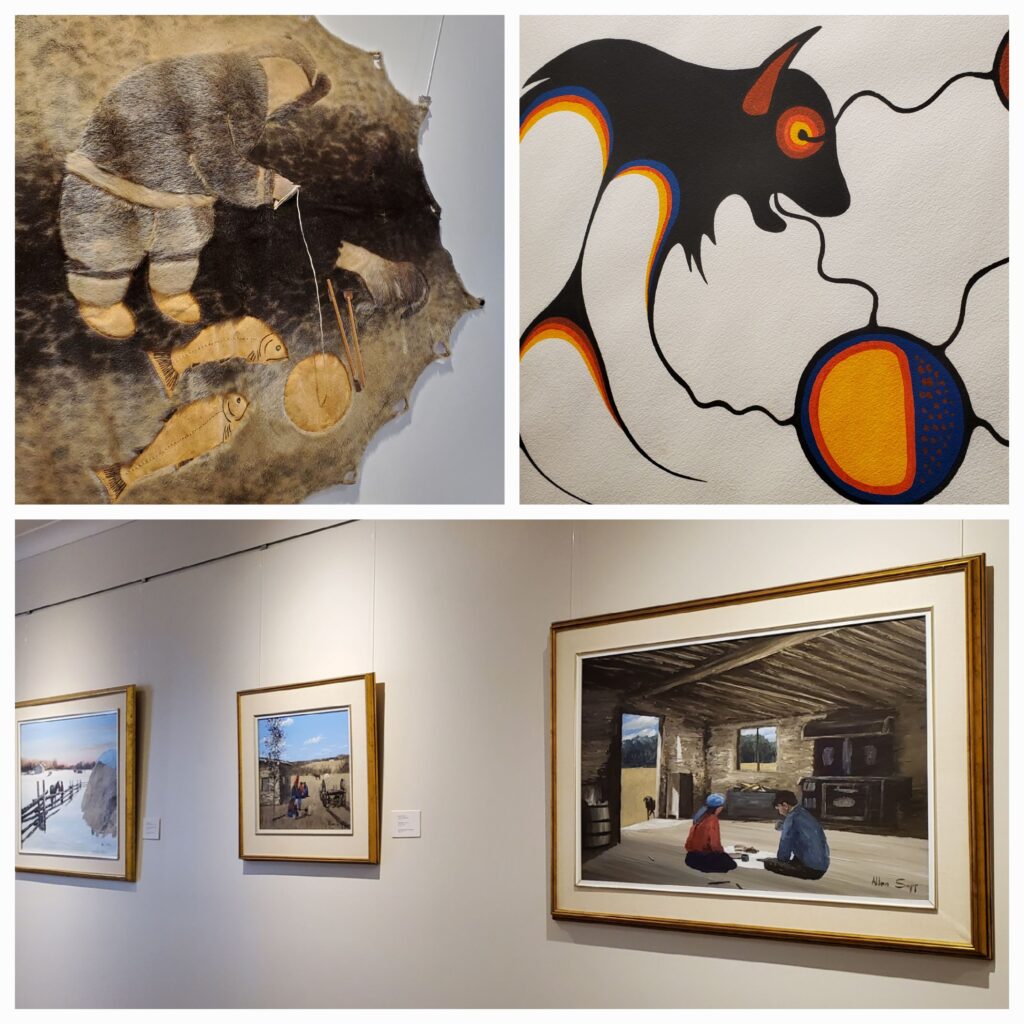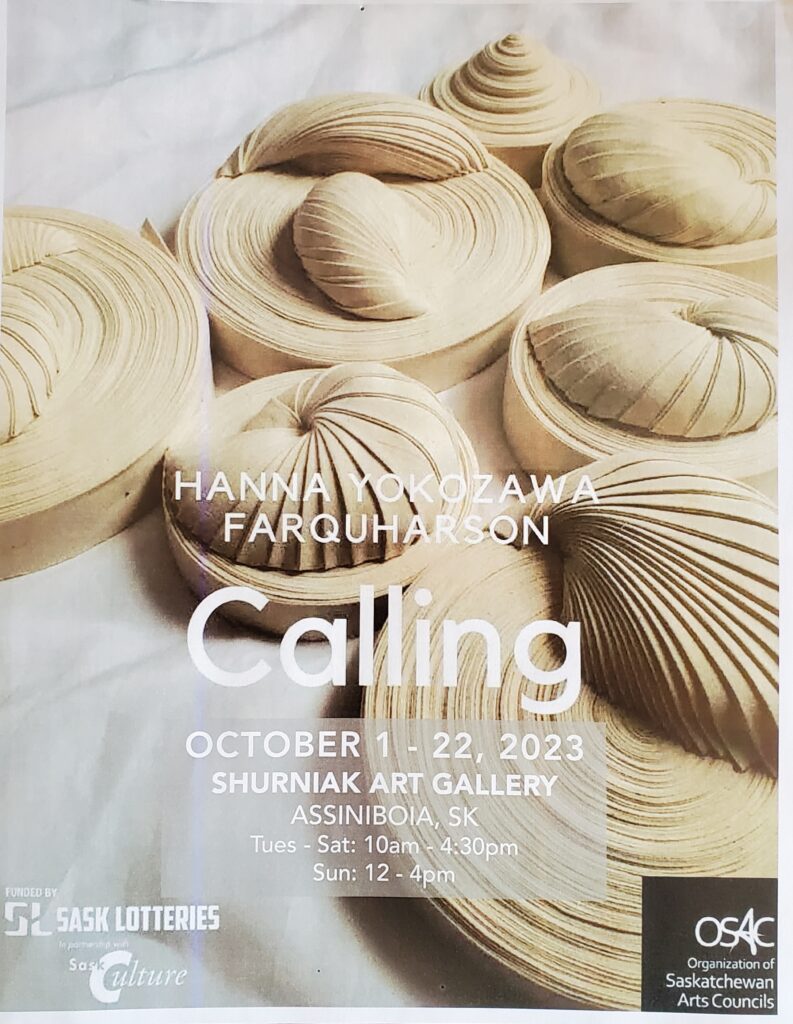
Artist Retreat Exhibition

The Arts Matter
by Shurniak

by Shurniak
by Shurniak

This exhibit “Coming Home” celebrates the landscape and animals of the prairies where Kathy grew up. Using encaustic on various surfaces, some of which are gathered from buildings of the past, she captures the essence of rural Saskatchewan through this unique medium.
by mediaovc2020

The Path Less Taken.
This exhibition created from Bill Shurniak’s permanent collection focuses on Indigenous life through the eyes of artists Allan Sapp, Micheal Lonechild, Clemence Wecoupe and more. Together a seal skin, antler carving, oil, acrylic and watercolor paintings showcase the variety of mediums represented.
by Shurniak

Calling
The exhibition, ‘Calling’, features the beautifully crafted and thoughtfully meditative fibre works of Saskatchewan artist, Hanna Yokozawa Farquharson.
by Shurniak
Since July 2021 she has created over 100 installations at residential school historical sites, museums, art galleries and other public spaces.
Many of these spaces serve to present a colonial viewpoint and primarily speak about the settlers who arrived and lived here, but not the Indigenous people that were displaced along the way.

The installations are constructed with red wool, silk, cotton yarn.
Red is the colour of blood. Red is the slur against Indigenous people. Red is the colour of passion and anger, danger and power, courage and love.
Her hope is to bridge the gap between settlers and Indigenous, Métis, and Inuit people by creating art that is approachable and non-confrontational and starting a conversation about decolonization and reconciliation.
A huge thank you!
Funding support from SkArts Community Micro-grant
Exhibition Sponsor – Canalta Hotels – Assiniboia